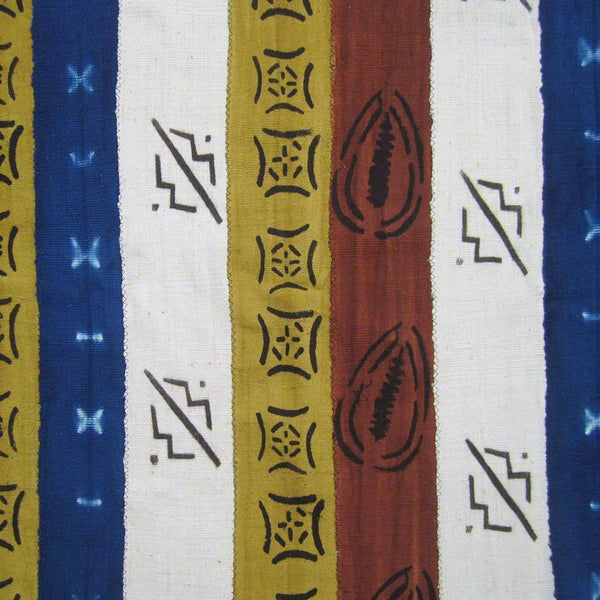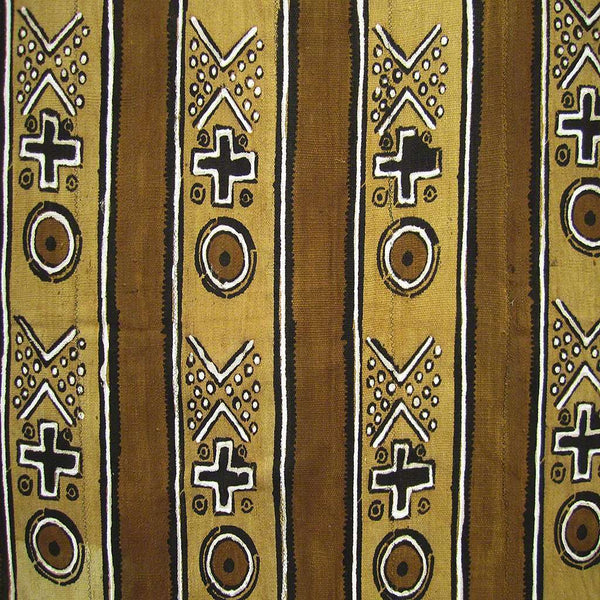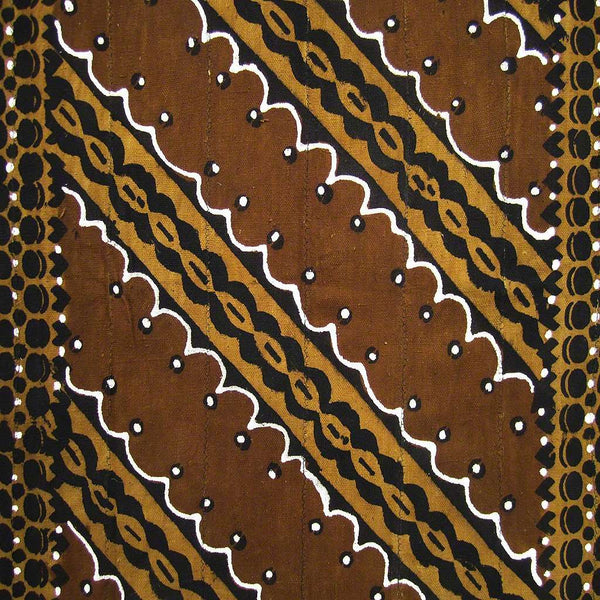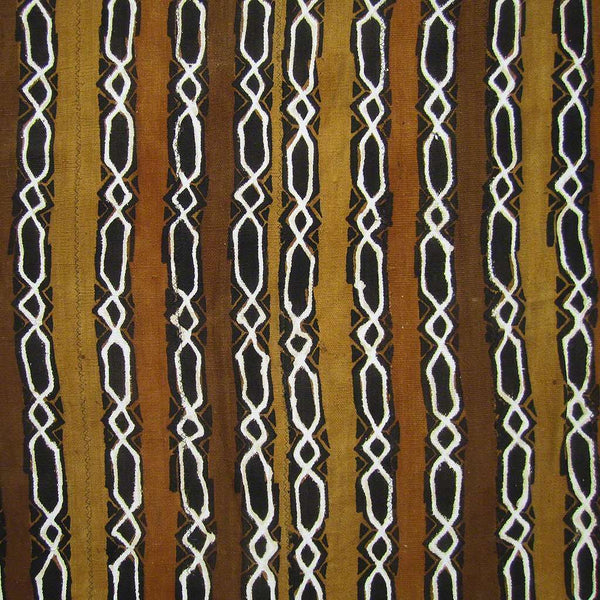Mudcloth
Mud cloth, or bògòlanfini as it's known in Bambara, is a distinctive Malian textile steeped in tradition and symbolism. Created by skilled artisans, primarily women, the process is a labor of intricate artistry. Handwoven strips of cotton are meticulously stitched together to form a larger cloth, which is then dyed with fermented mud, rich in iron content. The mud, collected from specific ponds and allowed to ferment for months, creates a range of earthy tones, from deep browns and blacks to ochre and rust. Following a complex resist-dyeing technique using stencils or freehand painting with a mixture of mud and other natural materials like leaves and bark, the cloth is repeatedly dyed and washed, revealing striking geometric patterns and symbolic designs. These patterns, passed down through generations, often tell stories, convey social status, or represent proverbs and beliefs, adding layers of meaning to each unique piece. Beyond its aesthetic appeal, bògòlanfini holds cultural significance, often used in initiation ceremonies and as a powerful symbol of protection and identity.




